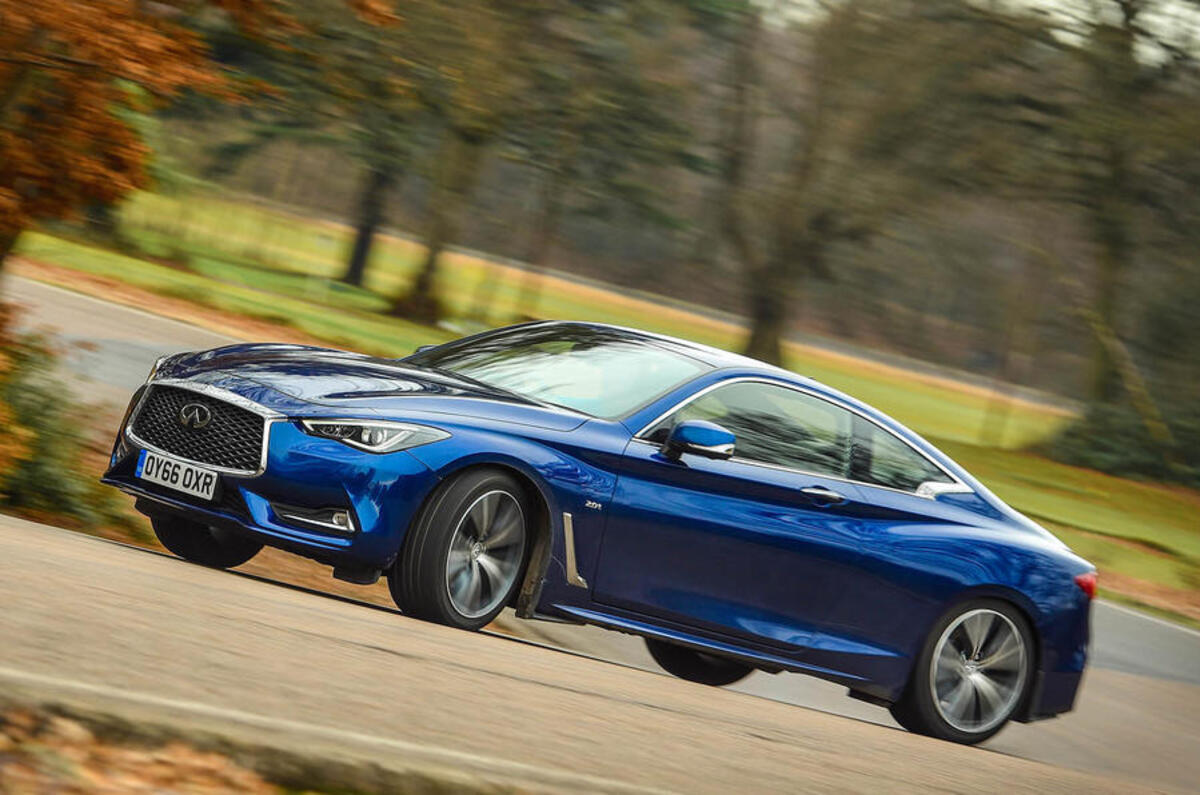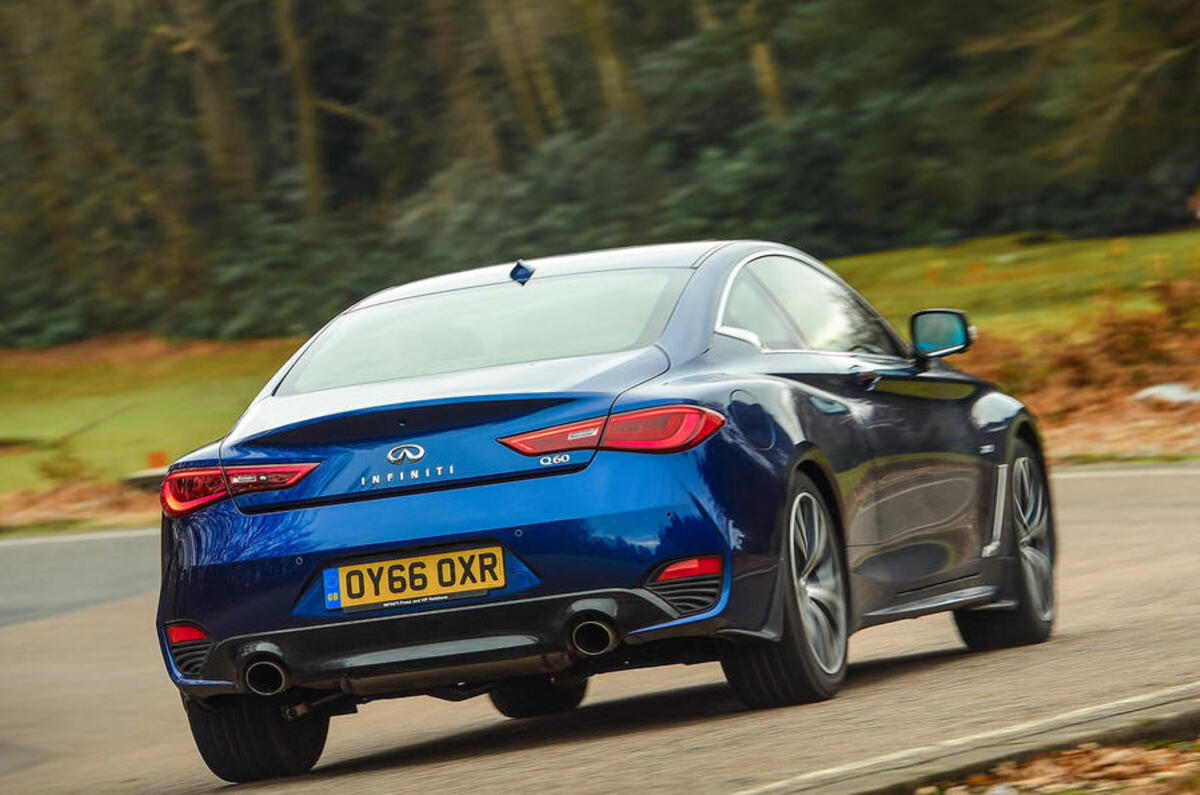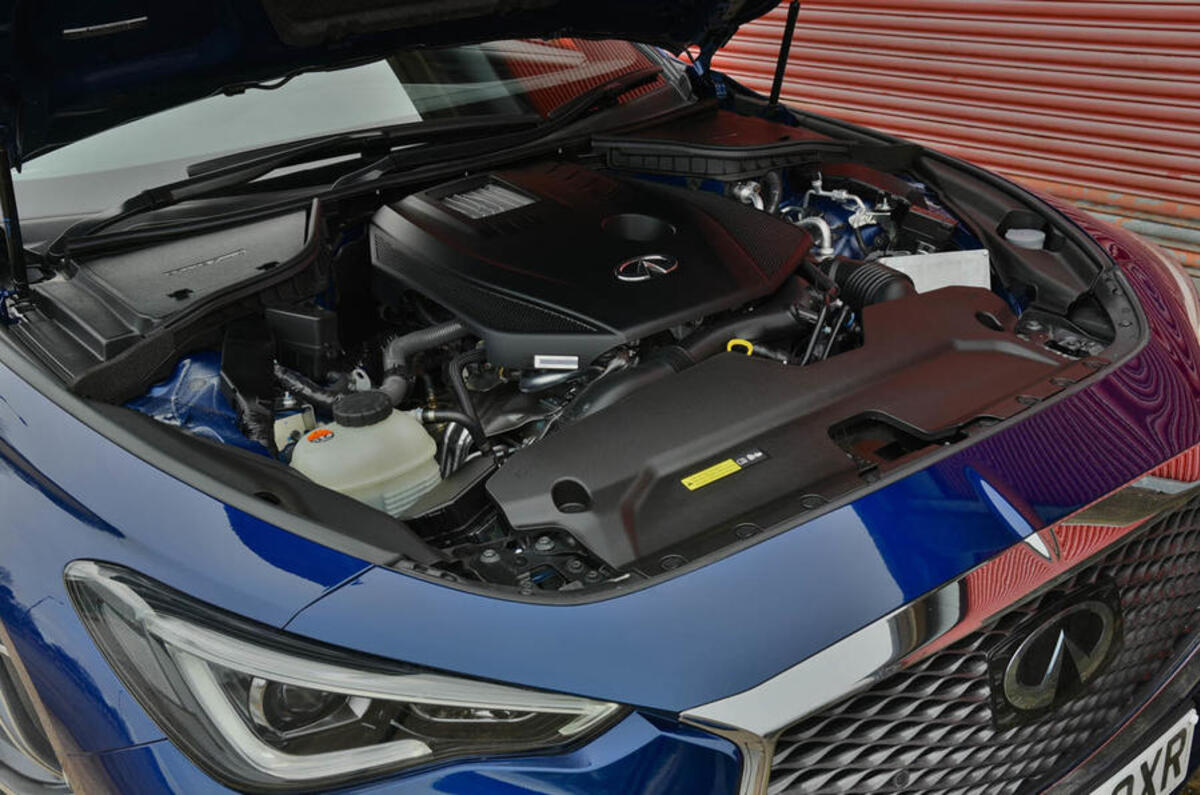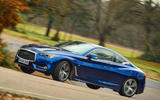The Infiniti Q60 has come along at a tricky time for a small car maker such as this to introduce any kind of medium-sized coupé onto the UK car market; the new Audi A5 is box-fresh in showrooms and the Mercedes C-Class Coupé still young enough to feel like a newbie.
Despite being given a strong start in life by what’s an undoubtedly handsome exterior styling, this car at once fails to match its key German rivals in most of the ways that matter; and also to endear itself to its driver enough to represent a tempting alternative to a set of broadly talented but, in some cases, unexciting competitors.
The engine with which Infiniti chooses to power the car we are testing, and what we must imagine Infiniti intends to shift as its bigger-selling of two petrol-powered derivatives, is a 2.0-litre turbocharged and directly injected motor that produces 208bhp and 258lb ft of torque.
For a similar outlay, BMW, Mercedes-Benz or Audi will sell you a like-for-like four-cylinder petrol coupé with significantly more power and better claimed fuel economy. And while the Q60’s acceleration is advertised at almost seven-and-a-half seconds to 62mph, its rivals do the sprint in around six.
On the upper-level, the V6 Q60 3.0T Infiniti offers four-wheel drive and adaptive ‘digital’ dampers, but on this Q60 it fits passive suspension, rear-wheel-drive only and a seven-speed automatic gearbox.






































